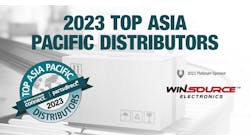The age of the development kit has arrived. element14 recently surveyed more than 1,500 electronic prototype designers and found that, on average, development kits were used in 45% of all designs in the last year. Ready-made, low-cost boards are providing engineers the opportunity to test design ideas alongside a variety of components, and putting powerful design tools into the hands of independent innovators. Combined with the democratization of the manufacturing industry, finished products are getting to market faster than ever before.
Driving an industry evolution
The dev kit, therefore, has an important role to play in changing the dynamics of the electronics industry—from a design, distribution, and supply-chain perspective. Sophisticated development tools and single-board computers (SBCs) such as Raspberry Pi or BeagleBone Black are permeating independent development communities. These communities are, in turn, creating unique solutions that meet real market needs not currently being met by suppliers. The overwhelming response to SBCs has encouraged more manufacturers to develop them and more distributors to supply them.
This is one of the fundamental evolutions changing the way customers interact with more traditional component distributors and suppliers. Customers now expect supportive solutions through the design cycle, versus a variety of components.
Leveling the playing field
One of the most popular uses of these boards has been as an education tool, bridging the gap between professional engineers, developers, and hobbyists alike who can try their hand at computer programming at a lower cost and risk.
Additionally, because they arrive fully tested and completed, businesses and entrepreneurs have begun integrating dev boards directly into their product designs in an effort to cut down on development time and costs. Designers are also finding they have more room to experiment, which has boosted the need for more support. Whereas before a datasheet may have sufficed, engineers now find themselves trying new approaches and turning to peers for advice and tips. Online communities and forums have flourished as a result, providing extra information engineers both young and old are in search of.
Developing the future
The present-day uses of development kits are well known. Embedded development kits are being used to test programmable components, usually microcontrollers or microprocessors. Analog kits are known for a wider array of functions, including sensing, power management, and amplification. At element14, we have seen such applications for development kits from the engineers and hobbyists who participate in our design challenges—from LED umbrellas to skin cancer screening devices.
When we think about the future of the development kit, however, we have to consider its inextricable link to the electronics industry at large. After all, dev kits are improving the design of new prototypes and bringing prototypes to life as the industry demand for them grows.
Expect to see the Internet of Things (IoT) not only boost the electronic components market, but also influence the direction in which development kits will grow. Specifically, we can focus on three areas within the IoT umbrella. The first is power consumption. We will see the proliferation of battery-powered handheld devices as they become the industry standard. This has already driven the quest for lower power consumption and wireless charging. Energy harvesting is key for designers looking to reduce power consumption and is one approach that will shape the future of the development kit and all of the functions it can support.
Connectivity is the second area of IoT in which development kits will play a role. The popularity of smartphones is driving wireless connectivity technologies such as Bluetooth (fitness and medical sensors), WLAN (Internet access and VoIP), GPS (handsets) and near-field communications (NFC). Next-generation development kits will play a vital role in assisting engineers designing external user interfaces to meet NFC compliance in Reader mode, peer-to-peer (P2P) mode, and Card Emulation. This is a segment set to skyrocket as IoT expands and NFC integrates into a manner of all connected devices.
Finally, touch is the future of human machine interfacing (HMI). It will allow users to connect with their smart devices, and development kits must provide engineers an easy way to configure capacitive touch buttons that provide audio-to-haptics feedback. Future development kits will also be crucial for designers to incorporate touch into smart devices at lower costs.
The development kit has already changed the electronics industry by opening up the design process for engineers. Existing solutions such as BeagleBone Black and Raspberry Pi have democratized the design process and allowed engineers to change the relationship between their suppliers and distributors. IoT presents a new set of key design challenges that development kits can help engineers overcome. It’s safe to say development kits will only continue to become more sophisticated and more responsive to the changing needs of the market.










